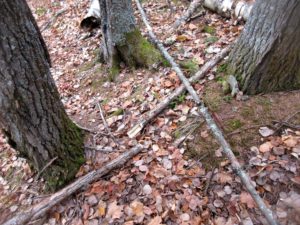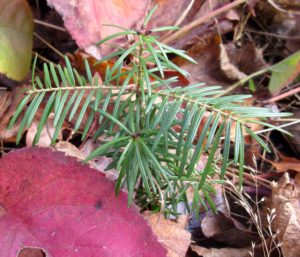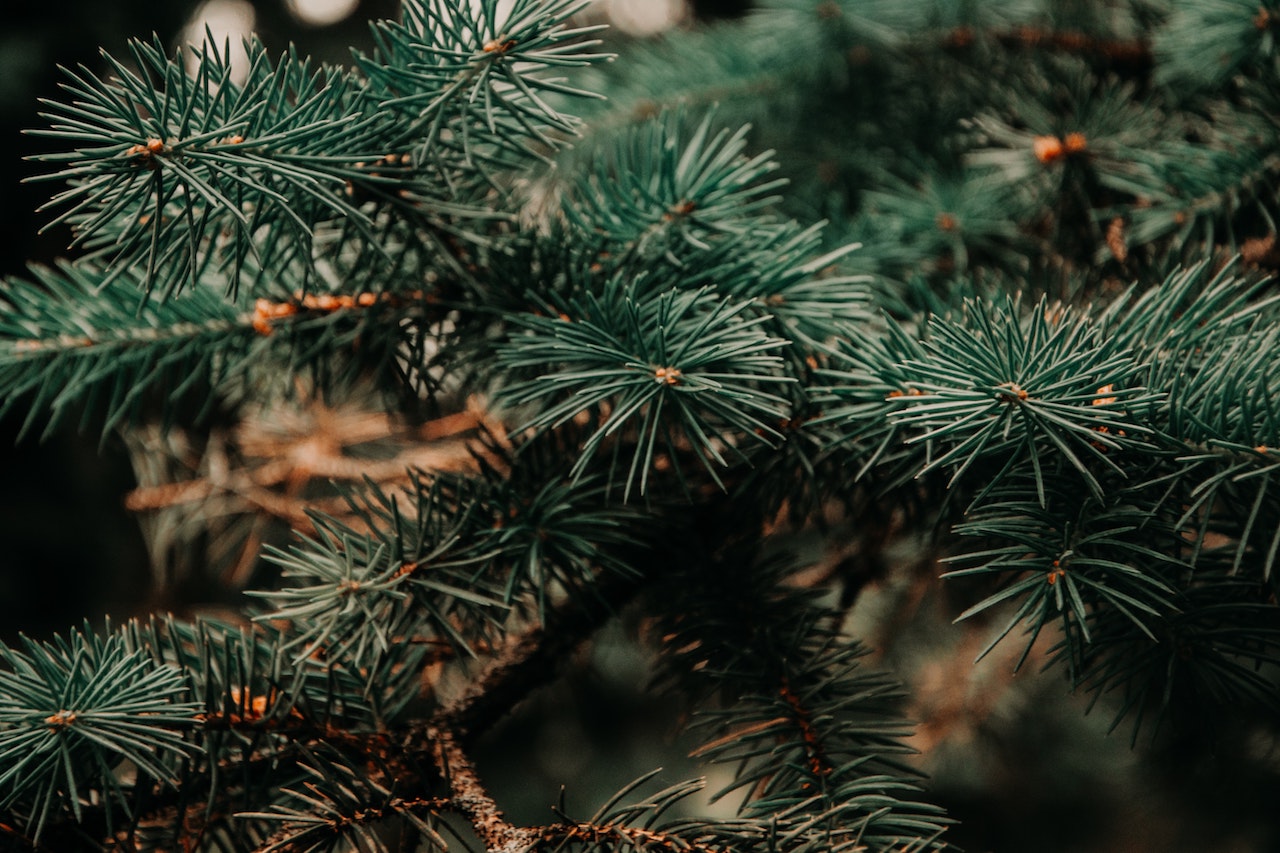By Wolf Ridge Naturalist
~50° F, Partly sunny, Recent heavy rains

The forest is familiar today, comforting.
Although it is not how it was. Like coming home for the holidays only to realize that your parents have repainted the outside of the house; what was once an odd grey-green is now even more olive. The change makes me smile. It’s different, but it doesn’t change the feeling.
The sun shines today. I, and the “mandala,” haven’t felt its warmth for what feels like a week. The mandala is a one-square meter patch of the forest I’ll be visiting at least once a week throughout the year. Through close observation of the same land throughout the year (peak fall colors, the coldest week of winter, heavy rains of spring), I hope to gain a deeper understanding of life in the forest at all levels.
The mandala is a one-square meter patch of the forest I’ll be visiting at least once a week throughout the year.
The first frost came and went since my last visit.
The nine, six-inch baby balsam fir trees are all still accounted for. Abies balsamea used quite often as a Christmas tree, is a cold-hardy species ranging from Alberta and Newfoundland in Canada south to Minnesota and the tops of the Appalachians in West Virginia. Enjoying a mean temperature of 40 degrees F (Finland, MN has a yearly mean temperature of 39.1 degrees F), these trees are built for the cold — when they are fully grown that is.
Large leaved aster dominates the ground cover in the forest but is noticeably sparse within the mandala. Sandwiched between two mature aspens and balsam fir, the nine fir babies have declared their intent. In May, they decided that it was their time. Together, they broke from their protective seed coverings, pushed through the layers of decaying leaves, and spread their tiny green needles to the sun. The sun shines brightly on the tops of the trees but doesn’t make it all the way to the forest floor where the baby balsams lie in waiting. Thankfully, the tiny trees are more dependent on moisture than they are on sunlight, and the last couple of days have brought plenty of moisture.

I extend my view out of the mandala, searching for what will become of the nine balsam fir babies in the years to come, but it looks bleak. Twisting my body, I see only one balsam fir that is under ten years old; it stands six feet tall. Most, if not all of these tiny fir trees are likely to perish.
Yes, they will die, but the parent trees prepare for this.
They produce thousands of seeds, knowing that they will be lucky if a few grow to be big and tall like them.
Humans do the opposite, they produce a few offspring and care deeply for them. They will clothe and feed their young, educate them, and eventually send them out of the house to make a life of their own. For the trees, they get kicked out of the house the moment they fall from the branch. Once they plant their roots, that is their home for life, there is no uprooting, moving away, and coming back. Thankfully, my two legs will let me come back to this spot, to sit on a rock and watch the mandala, for the rest of the year.
This series is inspired by David G. Haskell’s The Forest Unseen. Haskell visits a one-square meter patch of forest (the mandala) almost daily for a whole year to tell the story of the forest changing through the seasons. Haskell uses the term mandala, referencing the Buddhist geometric figure symbolizing the universe, to refer to the small forest patch he watches. I’ll be visiting the same spot in the forest a few times a week and periodically writing about the experience, connecting the stories I see unfolding to larger themes of biology.

